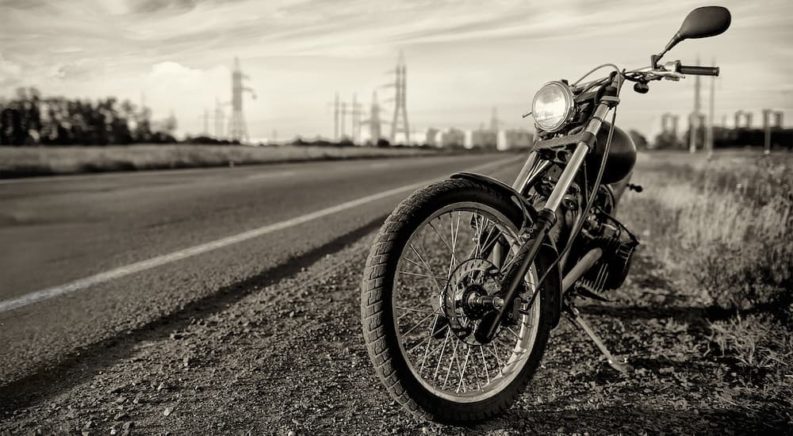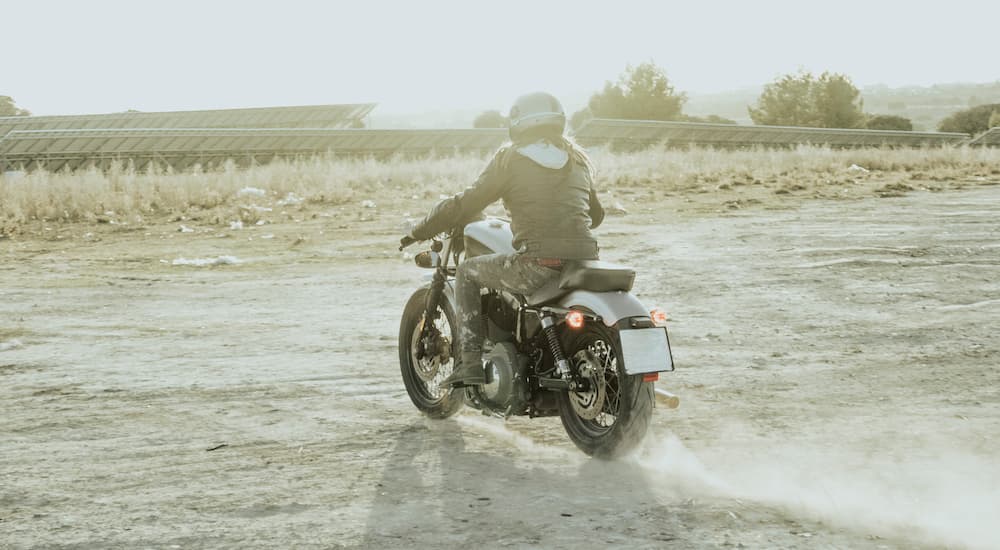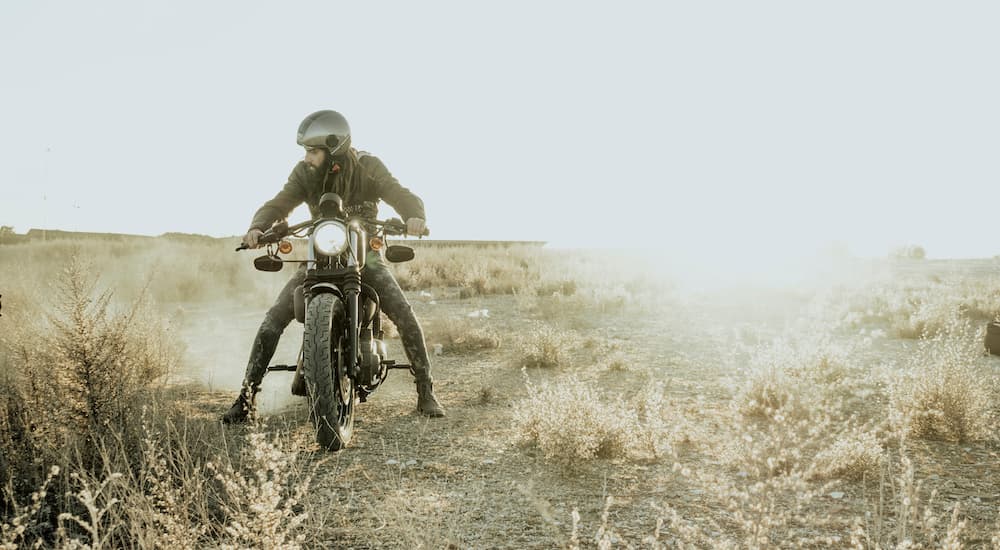Marrying into a family of motorcycle riders will do one of two things. It will either lead you to hate these two-wheel speed demons or cause you to fall head-over-heels in love with adventure. For me, the choice was obvious as I jumped in the saddle for the first time, overwhelmed with adrenaline and the thought of how in the world I could handle such an epically powerful machine.
The search for a motorcycle dealer near me led me down a rabbit hole and introduced me to a world of icons that transformed the motorcycle industry. Suddenly, my search became less about the different types of motorcycles I could buy now and more about the greatest motorcycles of all time. These bikes paved the way for my future in the saddle as a novice rider who keeps telling herself, “it’s just a bicycle with a motor.” Here’s a closer look at a few bikes that dramatically impacted the industry with their groundbreaking designs and components that have forever earned them a place in history.
BMW R32 (1923)
BMW spent its early years producing aircraft engines but was forced to pivot in 1919 under the Treaty of Versailles. BMW responded by building its first motorcycle, the R32, which debuted at the 1923 Paris Motorcycle Salon. The R32 immediately gained attention with its light 269-pound wet weight and capable, 500cc 8.5 hp engine. This combination made it a stellar and efficient performer, averaging up to 78 MPG and promising a top speed of 60 mph.
The R32 is remarkable because it introduced two features that would forever distinguish BMW Motorrad, giving every BMW motorcycle a unique calling card. The R32 features a unique shaft-driven powertrain layout with a boxer-twin engine. Because the engine’s horizontally opposed heads were located in the airstream, cooling was more efficient and solved a significant problem for most riders. As a result, the R32 gained a prominent following and ultimately laid the foundation for future models we know today like the Transcontinental, Scrambler, and GS.
Indian Chief (1940)
Indian is one of America’s founding motorcycle companies, sharing the stage with rivals like Harley-Davidson. With its origins dating to the early 1900s, Indian built its reputation with the Scout and Chief but saw its brand recognition skyrocket in 1940 with the newly redesigned Indian Chief and its large-skirted, flared fenders. The fenders became Indian’s trademark, distinguishing the brand from Harley-Davidson and giving the motorcycle a unique flair that was instantly recognizable on the road.
Indian’s new design of the Chief was so popular in 1940 that it forced Harley-Davidson to shift gears. At the time, Harley-Davidson was the best-selling bike brand in America, but the 1940 Indian Chief threatened that position. The Indian Chief was not only powerful and capable, but it was luxurious, sophisticated, and reliable, three characteristics that deemed it a favorite over the Harley-Davidson lineup.
Triumph Bonneville (1959)
Like every other manufacturer on the list, Triumph needs little introduction as one of the leading names in the industry for over a century. Triumph has the Bonneville to thank for much of its success, with the bike the brand’s best-selling model since its debut in 1959. But what makes the Bonneville so special?
The Bonneville is named after the Bonneville Salt Flats in Utah, a notorious area where motorcycle manufacturers compete to set new land speed records. The 1959 Bonneville put its rivals on notice, boasting a parallel-twin four-stroke engine that delivered enough power to reach 115 mph without breaking a sweat. This level of power was unheard of at the time, earning the Bonneville celebrity status all the way from Britain to Hollywood, where legends like Marlon Brando, Steve McQueen, and James Deen hopped in the saddle.
Harley-Davidson XR750 (1969)
Harley-Davidson dominated the racing circuit in the 1960s, but new AMA dirt-track rules forced the company to design a new bike that was eligible to compete. After a year of scrambling, Harley-Davidson used parts on hand to build the 1969 XR750, entering it into the AMA Grand National Championship, where it competed against the best bikes in the world. The result was extraordinary as the XR750 became one of the most successful bikes in AMA history with the most wins, retiring from competition in 2016 when it was replaced by the XG750R.
Fortunately for riders, the new AMA racing rules required every bike in the competition to be available to the public. Harley-Davidson responded in kind, giving civilian riders the opportunity to buy the XR750 off showroom floors nationwide. Coincidentally, the XR750 made it into the garage of a legend known as Evel Knievel, an American stunt performer who dubbed the XR750 his “bike of choice” for most of his legendary stunts.
Ducati 750 Super Sport (1974)
Today, the Ducati name is sure to garner a nod of approval, but the Italian manufacturer hasn’t always been a leader in the industry. Ducati was relatively unknown until the 750 Super Sport made its debut in 1974 as the first factory race bike available to the public. It was inspired by the 750cc bike that won the 1972 Imola 200 with Paul Smart in the saddle. However, the 750 Super Sport distinguished itself with its center-axle fork and advanced Brembo brakes.
Ducati added to the 750 Super Sport’s popularity with a limited production run, building only 401 models that were each overseen by Fabio Taglioni himself. Today, this exclusivity makes the 750 Super Sport incredibly valuable, with most models fetching at least $100,000. For longtime rider Keith Hale, his 1974 750 Super Sport has logged over 100,000 miles and is just as valuable to him today as it was in 1975 when he took out a loan and begged a local California dealer to sell their only model.
Honda Africa Twin (1988)
Honda was no stranger to the winner’s circle in the 1970s, earning the Paris-Dakar Rally title with the legendary NXR750. Despite these wins, however, Honda was determined to up the ante and did as much with the Africa Twin. Debuting in 1988, the Africa Twin was inspired by the NXR750 but defied the standards of a rally bike by adding the comforts of a touring motorcycle. As a result, the Africa Twin proved riders could have the best of both worlds.
The Africa Twin’s 750cc V-twin engine delivered plenty of power, ensuring its capability on and off the pavement. Its windscreen added comfort, especially when navigating trails or running at highway speeds. In addition, its wide flat seat added stability, while heavy-duty skid plates encouraged riders to venture off the beaten path. These features gave the Africa Twin a unique advantage, ushering in a new genre of bikes that we know today as dual sports.
What’s Your Favorite?
Naming the greatest motorcycles of all time is no easy feat and can often ignite a heated debate. You have die-hard BMW riders who attribute the R32 to speed-demons like the modern-day GS, while Norton-lovers claim there’s nothing that compares to the Commando and its Rolls-Royce roots. Other riders swear by Ducati or Harley-Davidson, each citing good reasons for their choice. So, how do you choose?
Everyone has their favorites, but it all comes down to preference. What’s important to remember is that these bikes lay the foundation for the modern motorcycles we ride today, the very same bikes sitting in our garages and parking spaces waiting for their next ride. Our best contribution to history is to enjoy our time in the saddle, riding our own ride and appreciating the remarkable history of these two-wheeled machines with a penchant for adventure.






